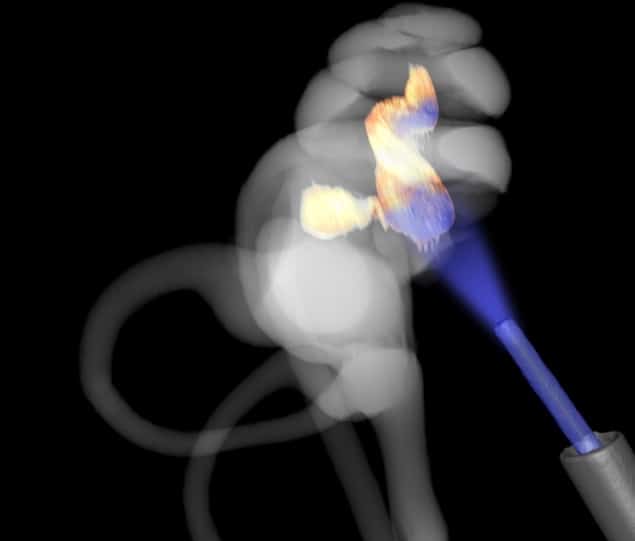
A research team at the University Medical Center Göttingen has created a cochlear implant that uses light to restore auditory responses in deaf gerbils. The study provides a proof-of-concept that combining optical stimulation with genetic manipulation can successfully restore sound perception, and could lead to a new generation of more accurate cochlear implants (Sci. Transl. Med. 10 eaao0540).
Approximately 360 million people worldwide have hearing impairment. Traditional cochlear implants can partially restore the ability to hear in many of these patients by stimulating ear cells with electrical signals. In such devices, however, the generated current tends to spread around each point of contact, activation of a large population of neurons and limiting the resolution and clarity of sound signals.
Christian Wrobel and colleagues tackled this obstacle by designing a light-based cochlear implant. Optical stimulation promises spatially confined activation of neurons in the auditory nerve, potentially yielding spatially precise ear cell stimulation with limited spreading.

To test their approach, the researchers carried out experiments in adult gerbils, which have a larger cochlea than other rodents and can detect the lower frequencies that a human would hear. The animals were first trained to jump over an obstacle upon hearing an alarm. The authors then injected a virus that carries a gene encoding for a light-sensitive ion channel into the gerbils’ cochlea, allowing their cochlear neurons to be activated by light. They then implanted optical fibres in the cochlea to deliver light signals.
When the cochlear cells were stimulated with a blue light instead of the alarm, the gerbils with implants jumped over the obstacle – suggesting that they registered the light stimulation as sound. The authors also induced deafness in a group of implanted, trained gerbils, and found that although they could no longer register the alarm, they still jumped over the obstacle after optical stimulation.
These findings indicate that the implant successfully restored auditory responses in the animals, and suggest that optogenetics might be used to develop cochlear implants with improved restorative capabilities.



